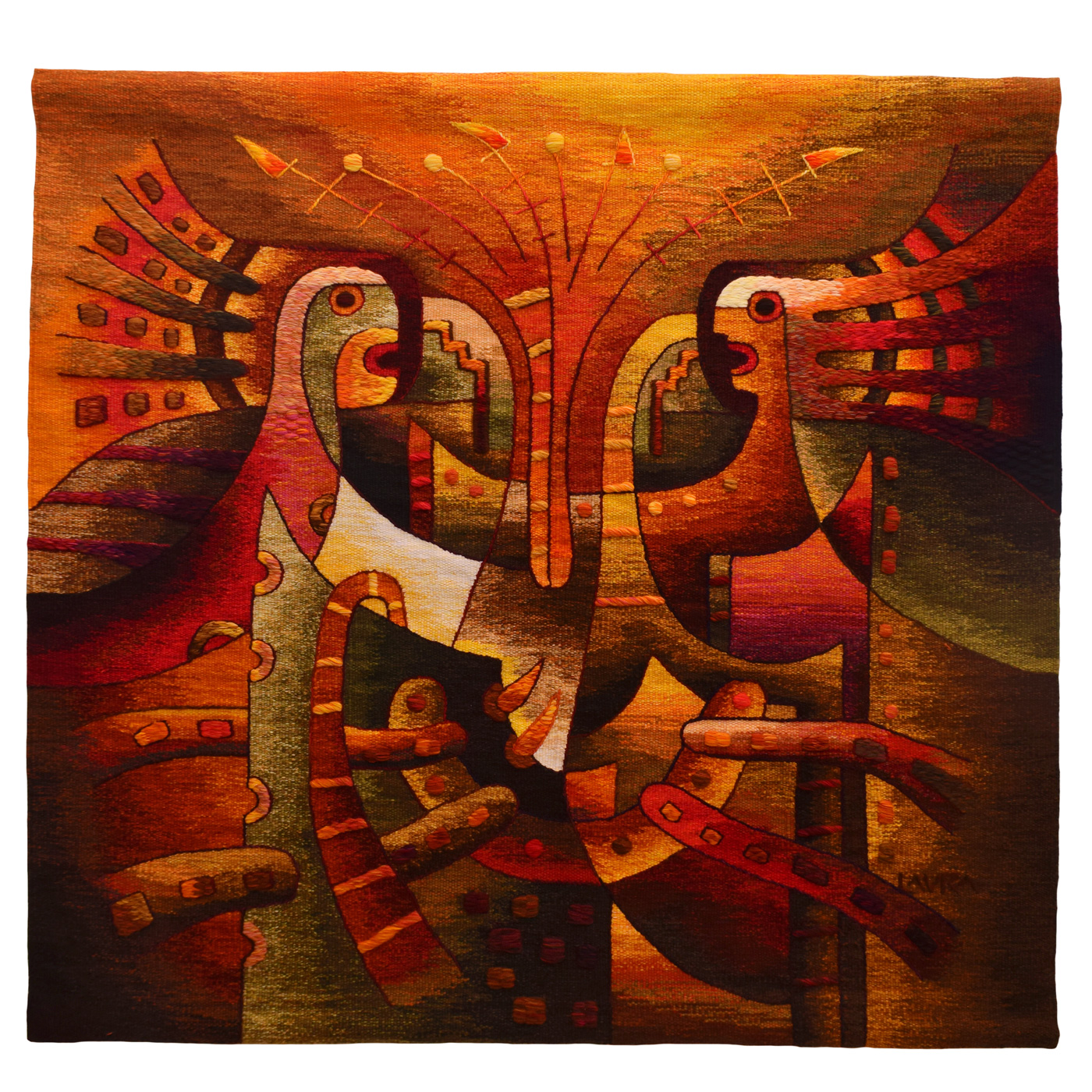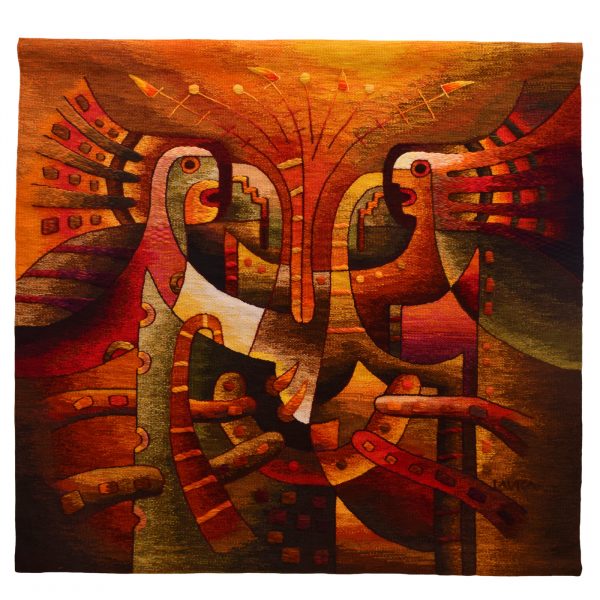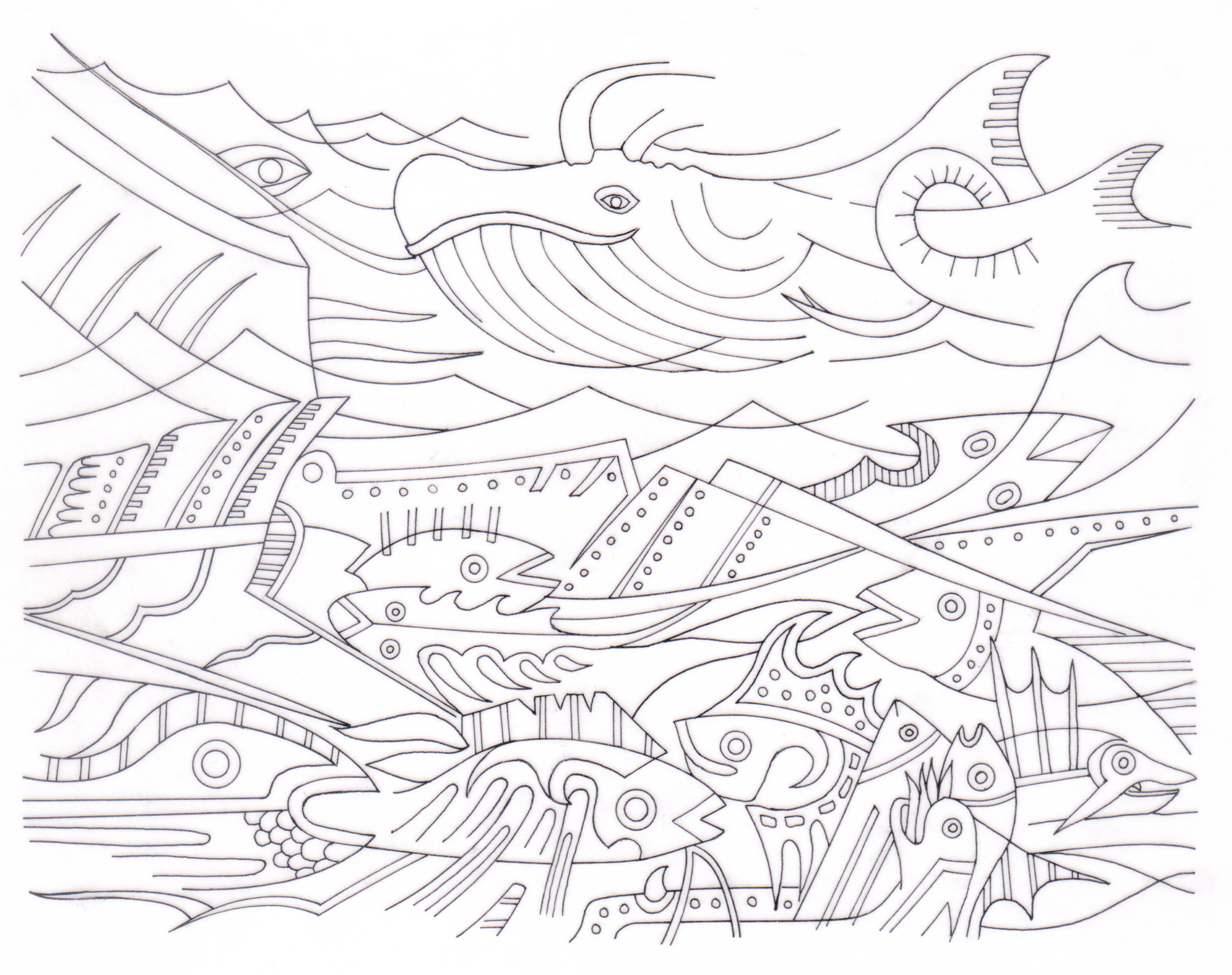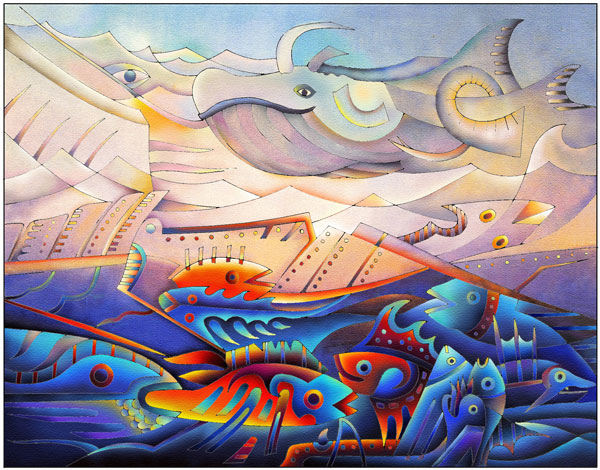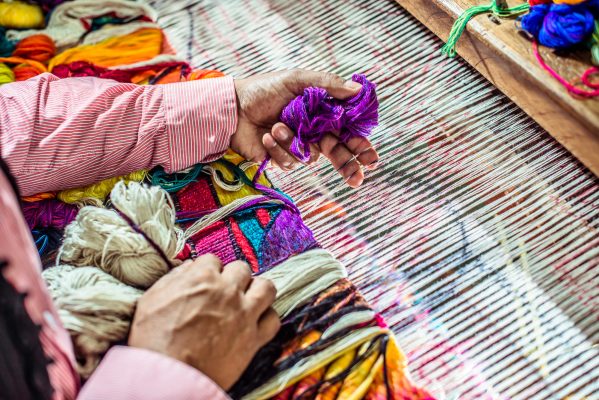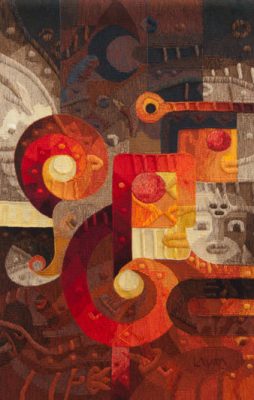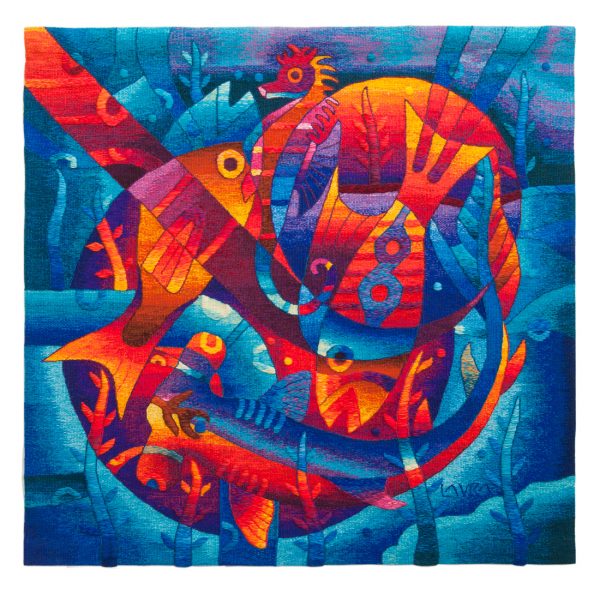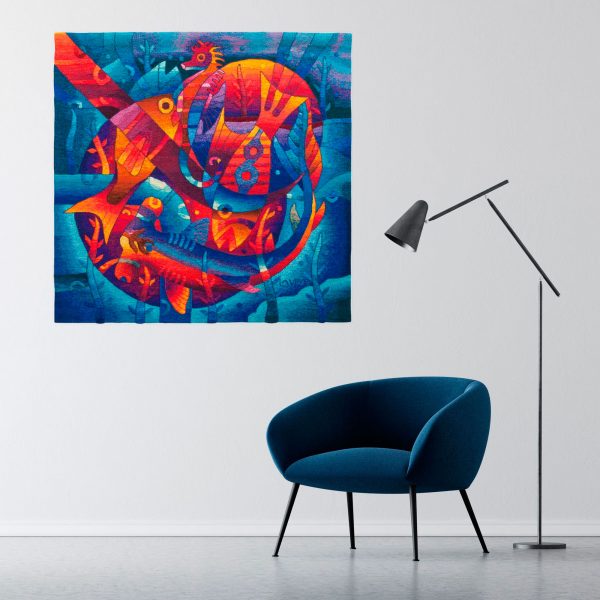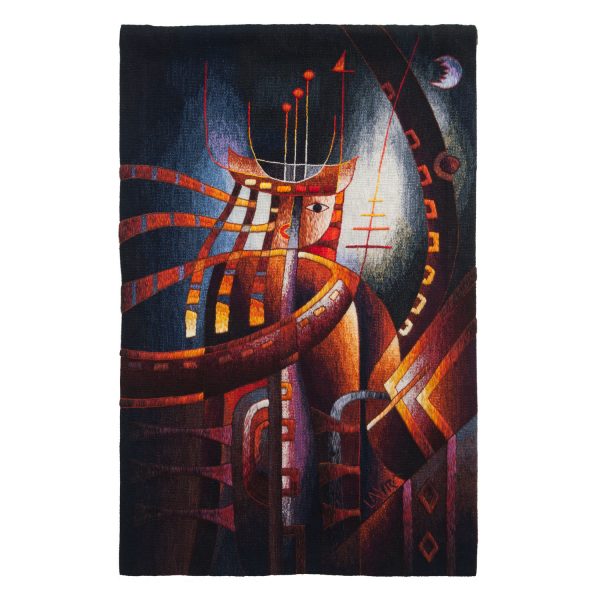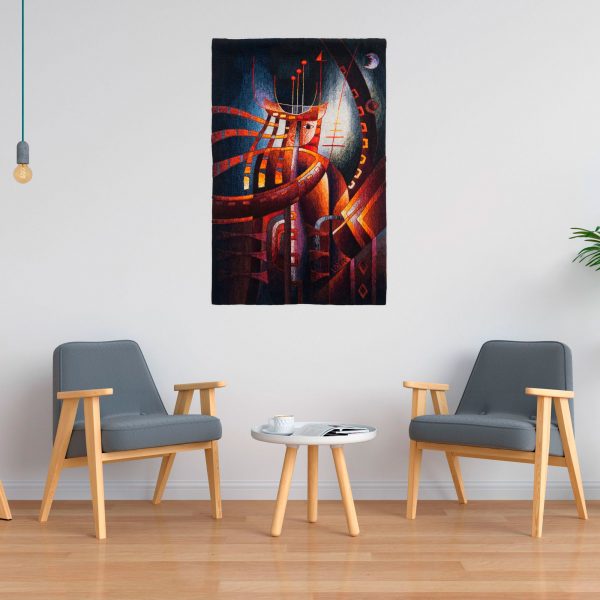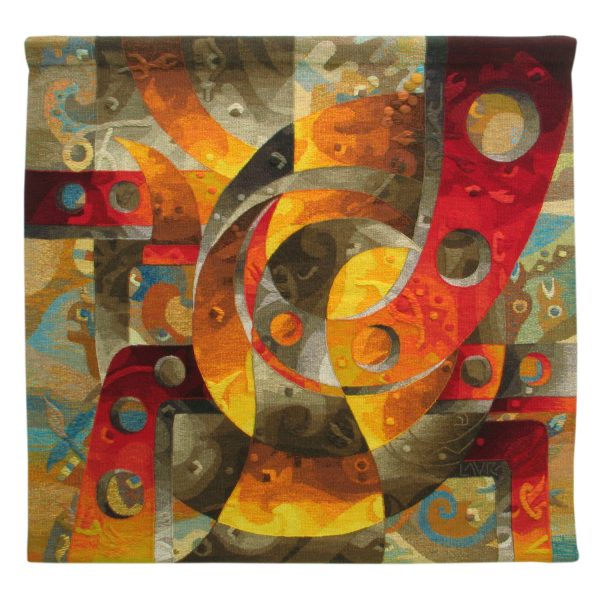Birds and Sea Life
Lastly, it is important to note that Maestro Laura has made a collection of works about birds, and another collection about sea life. This is because he very interested in the natural world and for him, they carry a deeper meaning of peace and continuity of our natural landscape and planet in a time of global warming and pollution. For his collection about sea life, which he has titled as the “Galapagos Collection”, he was inspired by the incredible natural life found in the Galapagos Islands in Ecuador. Although Maestro Laura is from the town of Ayacucho located in the Andes, he has lived more than 30 years in Lima, in the coast of Peru, with a close relationship with the sea and the ocean.
Patterns
In many of Maestro Laura’s tapestries you will also find a number patterns that repeat through different works, so it is important to make a note about the meaning of these patterns or motifs as well.
Circles: Circles in the Andean cosmology carry a meaning of cycles, of cyclical time and transformation, a way to understand the world where cycles of time recur and events with them, so the circle motifs represent this cyclical time, especially when the theme of the piece is related to harvest or seasons. In a more physical representation, many tapestries have motifs that carry the shape of natural landscapes, sometimes seen from a birds eye view. This way we can see the circles is some tapestries are representations of lakes.
Zig Zag Patters: We find these patterns in several tapestries (see image below), as the circles, they also represent a natural landscape. These patterns represent Andean terraces, steps created in the Andean slopes that are still in use today to farm, created and used not only by the Incas but by a number of Pre-Inca cultures to work on very steep areas. The terraces have shaped the Andean landscape for thousands of years and one can still see them all across the landscape when traveling through Peru and other Andean countries.
Checkered Patters: These patters also represent a natural landscape, and in this case, they represent the crop fields in the Andes, when seen from a birds eye view. It is interesting to find these three patterns when flying through the Andes, as with a privilege view we are able to see the lakes as small circles, the crop fields as checkered patters and, if seen from a low altitude, the Andean terraces.

